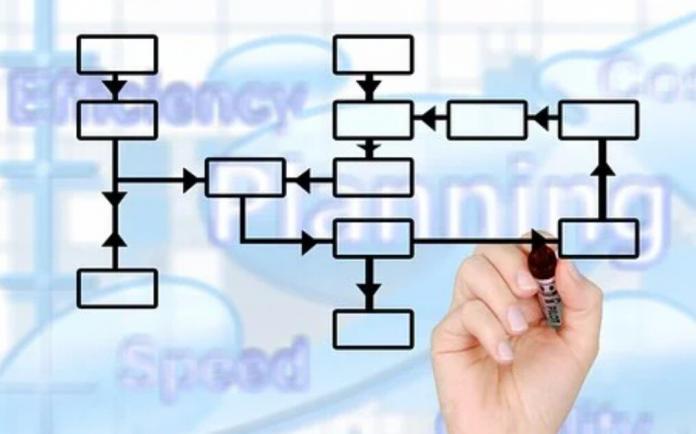What Is Product Lifecycle Management?
Product lifecycle management is the comprehensive process that product-based companies use to market their products from the development stage to the growth stage. It manages the entire development cycle including maturities and declines and is used to build the product development process. PLM organizes all aspects of a product portfolio including the pricing factors, promotional, marketing, and other distribution factors.
Product lifecycle management best synchronizes when a solid Enterprise resource planning (ERP) software assists it during each stage of the life cycle thus it’s an umbrella term for working on different stages.
Several organizations are manufacturing Product lifecycle management software that aids product managers during crucial decision-making steps.
Why Do Companies Need PLM?
Modern businesses and products are complex; therefore, their processing also becomes complicated. This complexity only increases between product design, supply chain management, marketing, and handling consumer responses.
The friction only increases with the growing global competition with shifting pricing structures for better quality and low prices and quick time to market for businesses to incur maximum profit.
Product lifecycle management helps businesses synchronize all their stages with fluctuating internal and external parameters. The technology manages each step for firms to acquire knowledge and respond to them by facilitating teamwork. The goal is to minimize time to market with maximized product quality.
Benefits of Product Lifecycle Management –
The ability to respond to external problems defines a business’s capability to thrive longer in the market. It is fueled by its efficiency to link the information acquired and building quality products. Close to half of product development resources are wasted, making more than half of businesses extremely slow with taking their product to market, let alone the budget.
Effective product lifecycle management combats these problems by prioritizing high-quality products and getting them to market faster. However, it doesn’t end there; it ensures product safety, increases sales, and reaches more customers with minimal waste.
What are the other benefits?
Here’s more to it-
- Excellent product quality.
- Low prototyping charges.
- Maximum and better supply chain management.
- Reduced waste.
- Framework for optimizing the product.
- Identifies sales opportunities and revenue contributions
- Ability to capture more market shares.
What Is the Product Life Cycle?
One common misconception around Product Lifecycle Management is that people believe it carries forward the same introduction pattern from development to marketing, maturity, and declination. The product’s lifecycle starts when its launched in the market and ends when it matures completely and reaches end-of-life. It is then taken off the market, virtually and physically both.
But as the product matures and spends more time in the market, it makes more consumers and more sales.
Each product’s lifecycle is different and unique; however, the vulnerability of not gaining tremendous traction persists for most of them. Not making it up at the introduction phase might make it challenging for the team to double down on efforts, but Product Managers should stay consistent through each stage of this process-
Stage 1- Product Development– After introducing it to the market, planning and research are the first steps involving sorting out its conceptual and manufacturing design.
Your Special focus during this stage should be on-
Creating Awareness: Focus on conveying its unique features and benefits.
Get more insight: Learn your consumer’s habits and what they perceive about your product. Doing this at the beginning will allow you to make necessary transitions and add benefits.
Stage 2- Product Growth- Once the product’s released, it’s more than a prototype, and the distribution picks up along with demand and sales. But there’re other fishes too; thus, competition increases manifold. Thus during the growth stage, you’ll have to focus on the market share while still building the brand name and recognition.
Your Special focus during this stage should be on-
- Grab market share- The faster, the better, expand your product’s room by pulling out all the stops- features, unique marketing, PR, etc.
- Focus on demand and Supply– Demand shouldn’t exceed supply by huge margins.
- Observe your competition- Make necessary changes according to market trends to remain competitive.
Stage 3- Product Maturity- Your product is now quite renowned to market itself and is extensively available, but the competition doesn’t slow down here; instead keeps on increasing.
Therefore you’ve to build on its Unique Selling Point in different ways like packaging and values to cater to all audience segments.
Your Special focus during this stage should be on-
- Maximize profits by reducing costs – Focus on making your production and supply chains efficient.
- Maximize the length of the maturity phase- Make a difference in the market by adding new features, a unique, sustainable pricing strategy, and staying ahead of the curve.
Stage 4- Product Decline- There comes a set where it’ll start losing the market share by reaching the obsolete state. And it’s obvious to cross the peak demand, but now you’ve to focus on your exit strategy.
You’ll have to identify new market opportunities to make iterations to the product so that it sustains the wave of declination. When you work on expanding what new audience and requirements you can cater to, you’ll find enhanced excitement and need for your product in the market.
Your Special focus during this stage should be on-
- Redirect for a new market segment.
- Build on your existing customers with new product variations.
- Manage the product’s end-of-life stage by keeping costs at a minimum and reaching all legal commitments
Bottom Line-
An efficient Product Lifecycle Management process guides and assists businesses at every stage and allows them to-
- Structure information with business objectives in a detailed framework.
- Provides secure collaborations.
- Overview of all business departments from Design, Manufacturing, Marketing to Supply Chain.
What has been your experience with PLM systems and processes? Do let us know your views and challenges with your Product Lifecycle Management in the comments below.
Related posts:








